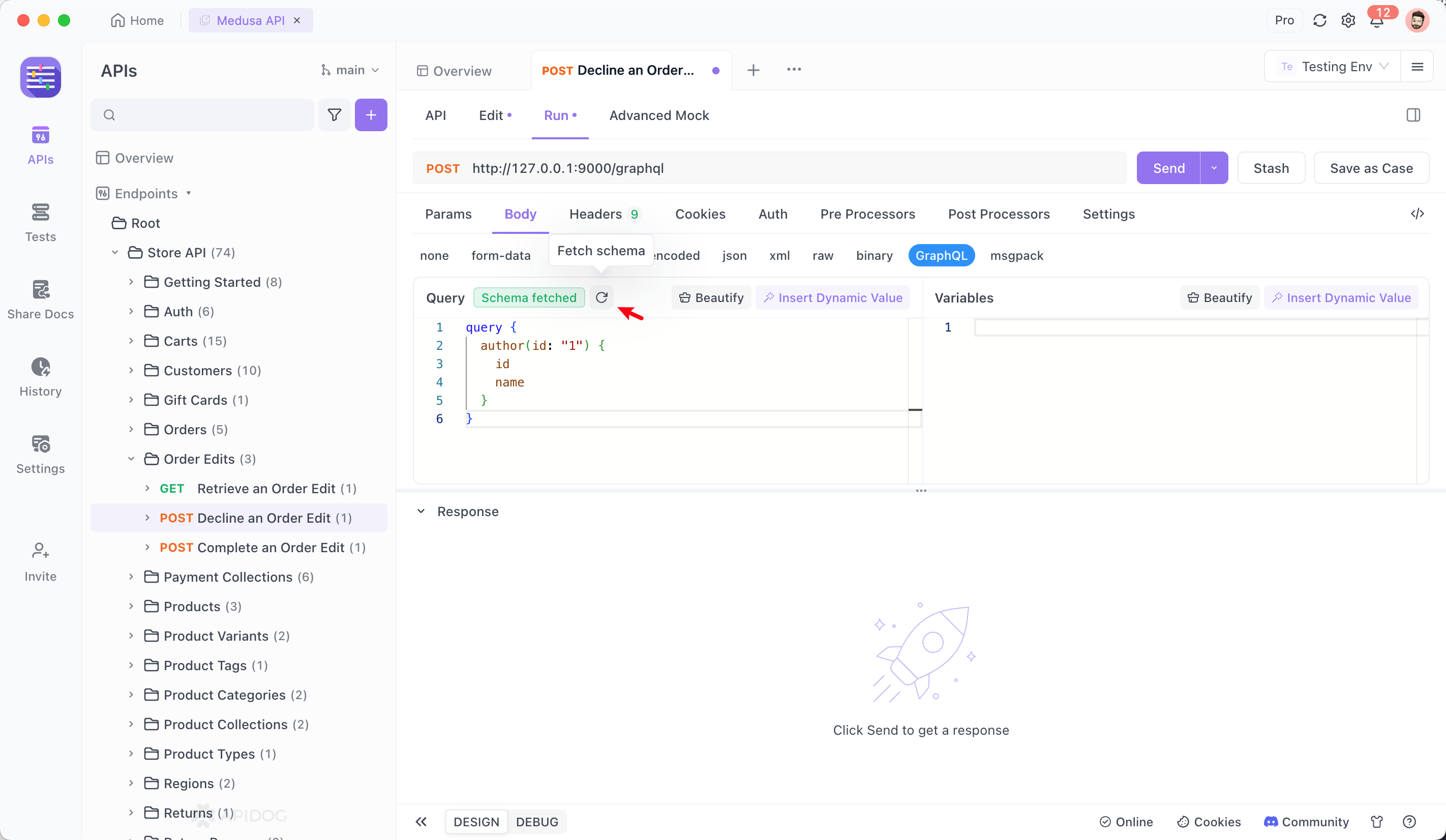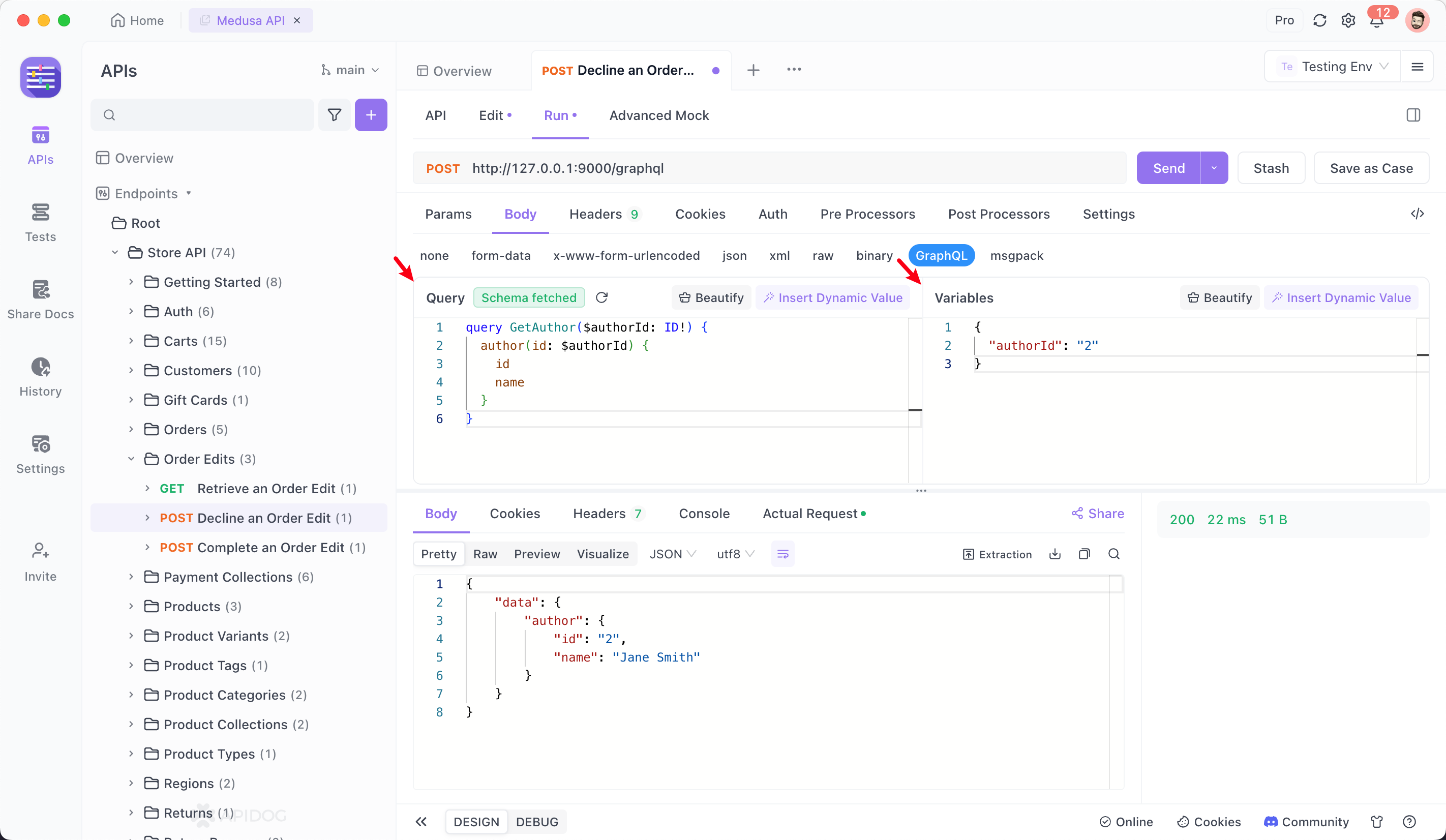- Apidog Learning Center
- Get started
- Introduce Apidog
- Basic concepts in Apidog
- Navigating Apidog
- Quick Start
- Migration
- Design APIs
- Develop and Debug APIs
- Mock API data
- Automated tests
- Publish API Docs
- Send requests
- Overview
- gRPC
- Use request proxy agents for debugging
- SOAP/WebService
- GraphQL
- WebSocket
- Socket.IO
- SSE debugging
- Create requests
- Authentication and authorization
- Response and cookies
- Branches
- Apidog MCP Server
- Best practices
- Administration
- Billing
- Add-ons
- Account & preferences
- References
- Apidog Europe
- Support Center
GraphQL
Creating a New GraphQL Request#

Requesting GraphQL#
Fetch Schema button in the input box to enable the "code completion" feature for Query expressions, assisting in entering Query statements.

Modified at 2025-01-27 02:32:30